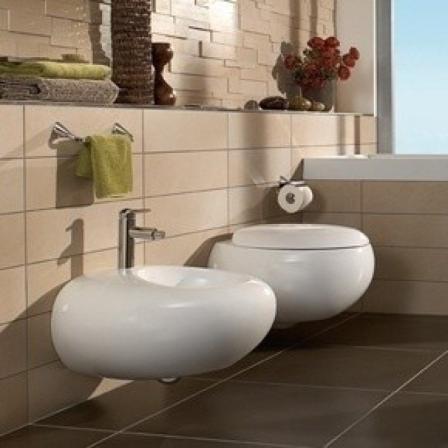Wood flooring has long been celebrated for its timeless elegance and warmth. However, there are challenges to using traditional solid wood flooring, such as high maintenance costs, susceptibility to moisture and temperature changes, as well as potential deforestation concerns. This has led to a surge in popularity for wood effect floor tiles, which replicate the natural beauty of wood while offering added durability and sustainability benefits. In this article, we will explore the various advantages of wood effect floor tiles and how they have become a highly sought-after choice in flooring options. 1. Authentic Appearance: One of the standout features of wood effect floor tiles is their ability to closely mimic the appearance of natural wood. Advanced manufacturing techniques have allowed for the creation of realistic grain patterns, textures, and even natural knots and imperfections. This ensures that every tile is unique, adding character and charm to any room. Whether you’re going for a rustic, traditional look or a contemporary aesthetic, wood effect floor tiles offer a wide range of options to suit various interior design preferences.

.
 2. Durability and Longevity: Compared to solid wood flooring, wood effect floor tiles are highly durable and resistant to wear and tear. They are less prone to scratches, staining, and fading, making them an ideal choice for high-traffic areas like kitchens and living rooms. Additionally, these tiles are impervious to moisture, making them suitable for areas with high humidity levels, such as bathrooms and basements. With proper installation and maintenance, wood effect floor tiles can last for many years without losing their original beauty. 3. Easy Maintenance: Maintaining wood effect floor tiles is a breeze compared to solid wood flooring. Regular sweeping and occasional mopping are usually sufficient to keep them looking clean and attractive. Unlike natural wood, these tiles do not require periodic sanding, staining, or refinishing. This not only saves homeowners time and effort but also allows for significant cost savings in the long run.
2. Durability and Longevity: Compared to solid wood flooring, wood effect floor tiles are highly durable and resistant to wear and tear. They are less prone to scratches, staining, and fading, making them an ideal choice for high-traffic areas like kitchens and living rooms. Additionally, these tiles are impervious to moisture, making them suitable for areas with high humidity levels, such as bathrooms and basements. With proper installation and maintenance, wood effect floor tiles can last for many years without losing their original beauty. 3. Easy Maintenance: Maintaining wood effect floor tiles is a breeze compared to solid wood flooring. Regular sweeping and occasional mopping are usually sufficient to keep them looking clean and attractive. Unlike natural wood, these tiles do not require periodic sanding, staining, or refinishing. This not only saves homeowners time and effort but also allows for significant cost savings in the long run.
..
 4. Environmentally Friendly: Wood effect floor tiles are an environmentally friendly alternative to solid wood flooring. They are typically made from ceramic or porcelain, which are naturally occurring materials. By opting for wood effect floor tiles, homeowners can contribute to the preservation of natural forests and reduce the demand for newly harvested wood. Furthermore, these tiles are recyclable and can be reused in other construction projects, minimizing waste and promoting sustainability. 5. Versatility of Design: Wood effect floor tiles offer a wide range of design options to suit every aesthetic preference.
4. Environmentally Friendly: Wood effect floor tiles are an environmentally friendly alternative to solid wood flooring. They are typically made from ceramic or porcelain, which are naturally occurring materials. By opting for wood effect floor tiles, homeowners can contribute to the preservation of natural forests and reduce the demand for newly harvested wood. Furthermore, these tiles are recyclable and can be reused in other construction projects, minimizing waste and promoting sustainability. 5. Versatility of Design: Wood effect floor tiles offer a wide range of design options to suit every aesthetic preference.
…
 From traditional oak and walnut to exotic woods like teak and bamboo, the choices are virtually limitless. Tiles can be arranged in various patterns, such as herringbone or chevron, to create a unique and visually appealing look. Additionally, wood effect floor tiles are compatible with underfloor heating systems, adding an extra level of comfort to any space. Conclusion: Wood effect floor tiles have revolutionized the flooring industry with their ability to mimic the authentic look of natural wood while providing superior durability and sustainability benefits. Their ease of maintenance and wide range of design options make them an attractive choice for both residential and commercial spaces. By choosing wood effect floor tiles, homeowners can enjoy the timeless elegance of wood flooring without compromising on functionality and environmental impact.
From traditional oak and walnut to exotic woods like teak and bamboo, the choices are virtually limitless. Tiles can be arranged in various patterns, such as herringbone or chevron, to create a unique and visually appealing look. Additionally, wood effect floor tiles are compatible with underfloor heating systems, adding an extra level of comfort to any space. Conclusion: Wood effect floor tiles have revolutionized the flooring industry with their ability to mimic the authentic look of natural wood while providing superior durability and sustainability benefits. Their ease of maintenance and wide range of design options make them an attractive choice for both residential and commercial spaces. By choosing wood effect floor tiles, homeowners can enjoy the timeless elegance of wood flooring without compromising on functionality and environmental impact.










Your comment submitted.